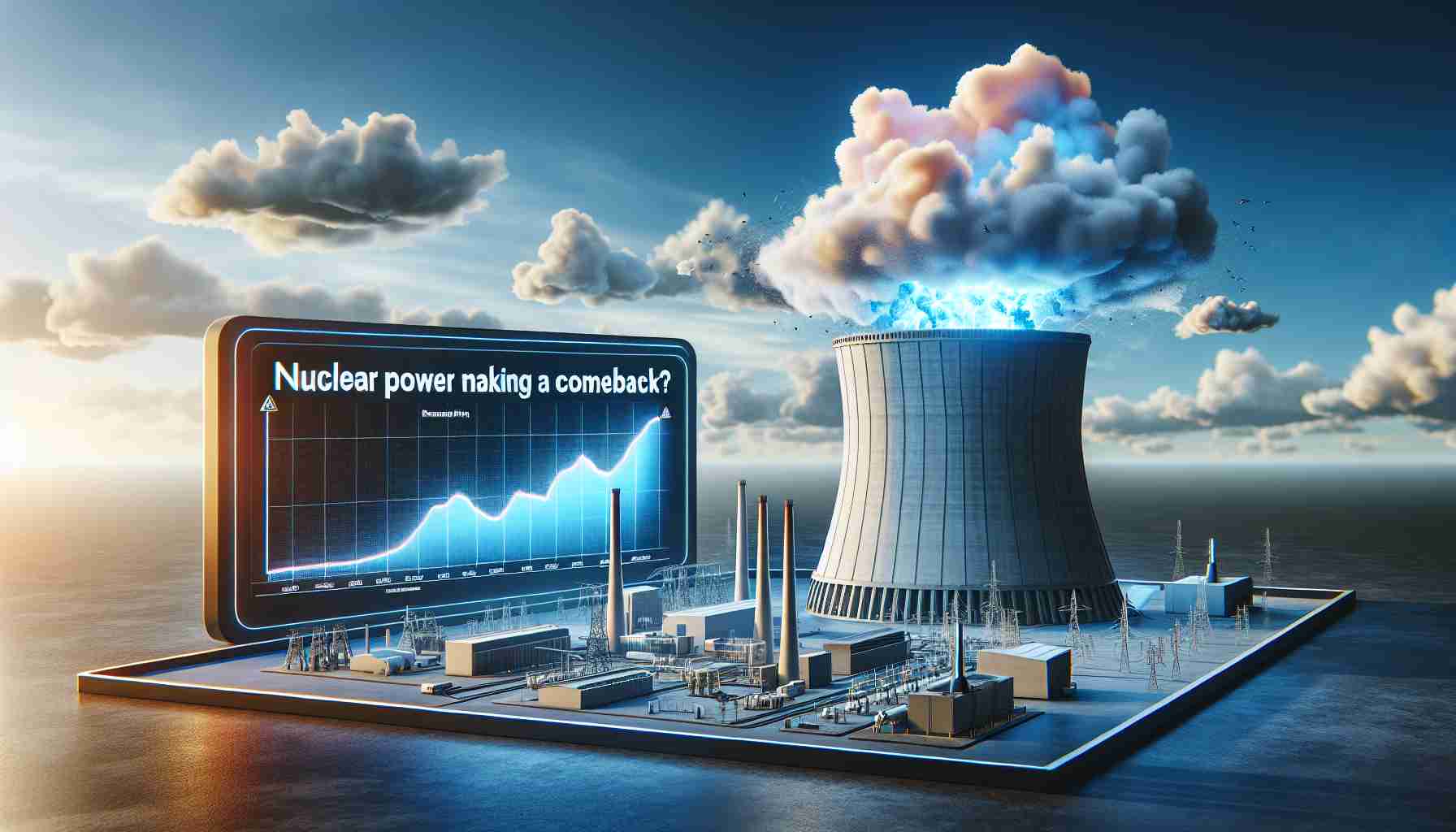The landscape of nuclear power is evolving rapidly with new technologies offering unprecedented opportunities and challenges. However, there’s a rising concern about a future risk that needs attention: cybersecurity threats to nuclear facilities.
As operators increasingly integrate digital technologies to enhance efficiency and safety, nuclear plants are becoming targets for cyberattacks. Unlike traditional physical security threats, these digital risks can potentially disable critical infrastructure, leading to catastrophic consequences if not addressed. The Stuxnet attack on Iranian nuclear facilities in 2010 is a stark reminder of what cyber vulnerabilities can lead to.
Experts warn that as nuclear technologies continue to adopt the Internet of Things (IoT) and Artificial Intelligence (AI) for real-time monitoring and automation, the risk of cyber threats increases exponentially. Hackers could remotely gain control over critical systems, disrupting operations or causing accidents. Moreover, the sophisticated nature of state-sponsored cyber warfare means that nuclear installations could be prime targets in geopolitical conflicts.
In response to these emerging threats, there is a growing emphasis on incorporating cybersecurity into nuclear safety protocols. New international frameworks and collaborations among nations are crucial to prevent potential cyberattacks before they happen.
Investments in cybersecurity infrastructure and training for staff at nuclear facilities are beginning to take priority. However, this issue continues to spark debate over which measures are most effective and how much trust should be placed in these digital defenses.
As nuclear energy takes its place in a sustainable future, addressing these cybersecurity risks will be critical to ensuring safety and maintaining public trust.
The Rising Cybersecurity Threat in Nuclear Energy: Implications for the Future
The integration of digital technologies in nuclear facilities ushering in a new era of efficiency and safety also presents a grave concern: cybersecurity threats. This evolving issue not only affects the operational aspects of nuclear power but also raises profound implications for environmental safety, humanity, the global economy, and the future trajectory of energy resources.
Environmental and Safety Concerns
Nuclear power, often touted as a cleaner alternative to fossil fuels, plays a crucial role in global efforts to mitigate climate change. However, the cybersecurity vulnerabilities of nuclear facilities pose a significant environmental threat. A successful cyberattack could lead to malfunctioning systems, resulting in potential radiation leaks or other catastrophic failures, similar to physical security breaches. Such incidents would have devastating consequences on the surrounding ecosystems, harming biodiversity, and delaying nuclear technology’s role in achieving a carbon-neutral future.
Impact on Humanity
The integration of the Internet of Things (IoT) and Artificial Intelligence (AI) in nuclear operations increases efficiency but also heightens the stakes of cyber threats. The potential for these advanced technologies to be manipulated could lead to scenarios where accidental or intentional disruptions cause radiological events, posing severe health risks to populations. Furthermore, public perception and trust in nuclear energy as a safe and sustainable source could be significantly undermined, slowing progress in adopting cleaner energy solutions.
Economic Repercussions
The threat of cyberattacks on nuclear installations also presents substantial economic challenges. Immediate impacts include the potential for costly damage to infrastructure, financial liabilities from environmental harm, and the economic strain of restoring operations. Long-term implications could affect energy markets by causing fluctuations in energy supply and price instability. Additionally, nations might be compelled to divert significant resources toward cybersecurity measures, affecting economic priorities and development agendas.
Geopolitical and Global Impacts
Nuclear facilities becoming targets in state-sponsored cyber warfare alter the landscape of international relations and security. The potential use of cyberattacks as tools of geopolitical leverage could escalate tensions between nations, leading to an arms race in cyberspace. This underscores the necessity for international cooperation and robust frameworks to address digital threats as part of broader nuclear non-proliferation and safety protocols.
Connections to the Future of Humanity
As humanity progresses toward a future increasingly dependent on digital technologies, the symbiotic relationship between technological advancement and cybersecurity becomes more critical. Ensuring the integrity of nuclear energy systems is imperative for harnessing their potential in combating climate change and delivering sustainable energy. This necessitates a paradigm shift in how cybersecurity is integrated into the design and operation of critical infrastructure, emphasizing innovation, international collaboration, and continuous adaptation to emerging threats.
In conclusion, addressing cybersecurity in nuclear power isn’t just a technical challenge; it’s a global imperative that intersects with the future of environmental health, human safety, economic stability, and geopolitical peace. By fortifying nuclear facilities against cyber threats, we not only safeguard today’s energy landscape but also lay the groundwork for a sustainable future for generations to come.
Cybersecurity Threats: The Hidden Challenge of Nuclear Power’s Digital Evolution
Emerging Technologies in Nuclear Power
The nuclear power sector is witnessing transformative innovations. Advanced digital technologies, such as the Internet of Things (IoT) and Artificial Intelligence (AI), are now being utilized for real-time monitoring and automation, promising enhanced efficiency and operational safety.
The Rising Threat of Cyberattacks
As nuclear facilities increasingly digitize their operations, they face unprecedented cybersecurity threats. Cyberattacks can destabilize critical infrastructure, presenting a modern risk comparable to traditional physical threats. Notable incidents like the 2010 Stuxnet attack on Iranian nuclear facilities highlight the severe implications of such vulnerabilities.
Impacts of Cyber Threats
The potential ramifications of cyber threats in nuclear facilities are profound. Hackers might gain control over or disrupt crucial systems, potentially leading to operational halts or catastrophic failures. The sophistication of state-sponsored cyber warfare further escalates the risks, putting nuclear installations at the heart of geopolitical tensions.
Strengthening Cybersecurity Protocols
Addressing these threats requires robust cybersecurity measures integrated into nuclear safety protocols. New international frameworks are needed to facilitate cross-border collaborations, enabling proactive defensive strategies against cyber threats. Investments in advanced cybersecurity infrastructure and comprehensive training for nuclear facility personnel are critical steps in this direction.
Strategies for Cybersecurity Enhancement
1. Investment in Technology: Upgrading cybersecurity infrastructure with the latest technology to detect and mitigate threats effectively.
2. Training and Education: Regularly training staff to recognize and respond to cyber threats becomes integral to facility safety.
3. International Cooperation: Nations must collaborate on information sharing and joint responses to manage the global nature of cyber threats.
Challenges and Debates
Despite these efforts, debates continue regarding the most effective cybersecurity strategies. Questions linger about the dependence on digital defenses and the constant evolution of cyber threats, requiring adaptive and forward-thinking approaches.
Predicted Trends in Nuclear Power Security
Experts predict that the integration of AI and machine learning techniques will significantly bolster cybersecurity measures by providing predictive analytics and automatic threat recognition.
For more information on sustainability and technological innovations in nuclear energy, visit the International Atomic Energy Agency or the World Nuclear Association.
The source of the article is from the blog combopop.com.br



